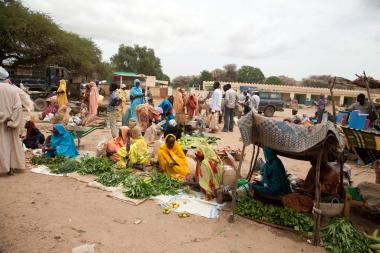Story Map
The impact of conflict on rural markets in Sudan
To better understand where and when aid is needed, this interactive map uses satellite imagery and photos to analyse the impacts of conflict in Sudan on market activity and agricultural production.
Publisher SPARC
People in Sudan are experiencing one of the fastest deteriorating hunger crises in the world. Famine conditions are spreading. Most markets and supply routes have broken down, and prices for food and basic goods have skyrocketed—making even the most essential items unaffordable for many.
Conflict means access to understand hunger and economic status is severely limited. On the ground reporting shows both the severity of conflict impacts in places like Al Fasher, but also the adaptability of those in the market: traders, farmers, and other businesses.
Humanitarian actors need more data to understand where and when aid is needed. In Sudan, where the security and economic context can change quickly and varies widely between regions, external actors must also be careful to consider how they intervene.
Directly supplying food and other items is critical when markets and agriculture are so deeply disrupted that food is unavailable. However, when trade routes stay active and farmers continue to harvest their crops, external aid may undercut them and disrupt their fragile recovery.
To better understand where and when humanitarian aid is needed, this interactive, digital Story Map combines satellite maps, research and photos to test the applicability of satellite imagery to help humanitarian actors understand changes in market activity and agricultural production since the conflict in Sudan began. It delves into the far-reaching consequences of conflict on rural markets in the country, and how traders, farmers and other businesses are adapting.
Read the Story Map: The impact of conflict on rural markets in Sudan


